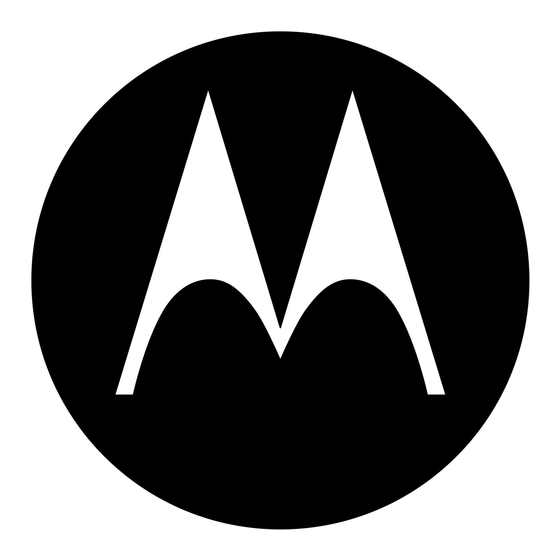Motorola CP040 Информация о сервисе - Страница 9
Просмотреть онлайн или скачать pdf Информация о сервисе для Радио Motorola CP040. Motorola CP040 30 страниц. Commercial radios uhf1
Также для Motorola CP040: Подробное руководство по обслуживанию (28 страниц), Информация о сервисе (48 страниц), Информация о сервисе (46 страниц), Руководство пользователя (18 страниц)

Controller Circuits
3.2.3
Serial Bus Control of Circuit Blocks
The microprocessor communicates with other circuit blocks via a SPI (serial peripheral interface)
bus using ports PD2 (data into uP), PD3 (data out of uP) and PD4 (clock). The signal names and
microprocessor ports are defined in Table 1-3.
Signal Name
SPI-DATA_IN
SPI_DATA_OUT
These signals are routed to:
the audio filter IC (U451) to control internal functions such as gain change between 25 kHz
and 12.5 kHz channels, transmit or receive mode, volume adjustment, etc.
the synthesizer IC U201 to load receive and transmit channel frequencies
option board connector J460-1 for internal option configuration and control (not used in
CP040)
serial EEPROM U402 (both SPI_DATA_IN and SPI_DATA_OUT are used)
In order for each circuit block to respond only to the data intended for it, each peripheral has its own
chip select (or chip enable) line. The device will only respond to data when its enable line is pulled
low by one of the microprocessor ports, as follows:
port PD5 (U401 pin 2) for the audio filter IC
port PH0 (U401 pin 47) for the synthesizer IC
port PH4 (U401 pin 43) for the option board/display enable (not used in CP040)
port PD6 (U401 pin 3) for the serial EEPROM
3.2.4
Interface to RSS Programming
The radio can be programmed, or the programmed information can be read, using a computer with
CPS (Customer Programming Software) connected to the radio via a RIB (radio interface box) or
with the RIB-less cable. Connection to the radio is made via the microphone connector (part of
accessory connector J471). The SCI line connects the programming contact (J471 pin 6) to ports
PD0_RXD (data into uP, pin 97) and PD1_TXD (data out of uP, pin 98). Transistor Q410 isolates the
input and output functions by allowing PD1 to pull the line low, but does not affect incoming data
from being read by port PD0. This isolation allows high-speed 2-wire programming via TP401 and
TP402 for factory programming and tuning.
3.2.5
Storage of Customer-Specific Information
Information that has been programmed using CPS, such as channel frequencies or selective
signaling codes, are stored in the external EEPROM, where it is retained permanently (unless
reprogrammed) without needing DC power applied to the microprocessor.
Table 1-3 SPI Bus Signal Definitions
Microprocessor Port
SPI_CLK
PD2-MISO
PD3-MOSI
PD4-SCK
Microprocessor Pin
U401 Pin 99
U401 pin 100
U401 pin 1
1-5
